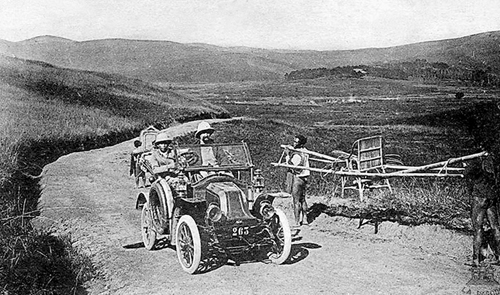From a vastly uninhabited area in the early 20th century, the French planned it into a city which is now called Da Lat located on the Lang Biang Plateau to serve the French expeditionary army.
To become the city that it is now, Da Lat went through three major planning stages by three French architects Ernest Hébrard in 1923, Louis-Georges Pineau in 1932, and Jacques Lagisquet in 1942.
Construction from zero
The whole construction cost to build an uninhabited plateau into a French city, called the Lang Biang Project, came from loans of the French government.
During the initial period, it was commonly called ‘the city of hope’ as mentioned in a report by the French army official Prosper Oden’hal in 1901. However, it reflected a strong faith of the French planners in the area.
Two first governor-generals of Indochina, Paul Doumer and Jean Beau, and their fellow workers carried out vast research to transform an uninhabited area into a highland city. Meteorologists came to measure the rainfall and temperature in Da Lat, currently the capital of Lam Dong Province in the Central Highlands.
Other tests included the keeping of poultry and planting many kinds of vegetables.
In 1901, the area called Da Lat had only 19 wooden houses built by the French to serve as administrative offices, private houses for French officials, accountants, guardians, taxmen, a post office, and warehouses.
Without residents, what French officials, including the first French mayor of Da Lat Paul Champoudry, could often do was go hunting and ‘imagine’ city planning, especially the supply of daily necessities and construction materials.
Champoudry was given the major task of building a European city in the land of An Nam, the former name of Vietnam during the French colonial time.
In 1905, Champoudry worked out his first plan to build a city of convalescence for the French expeditionary army. He planned an administrative center and a market located at the crossing of many major streets, which is now the Da Lat market.
At the time, Da Lat was isolated, without any streets linking it with other surrounding cities. There were no paths for donkeys to transport cargo so the job was covered by local ‘Annamites’.
A 60kg bag of rice was then carried by a group of four porters. 50 porters were mobilized to carry a group of several French visitors to Da Lat.
Da Lat became more developed later because of the outburst of World War I from 1914-18 when French officials and armies could not return to France.
In 1923, the city was planned for the second time by architect Hébrard but faced much protest by the media because of the discrimination between the French people and local ‘Annamites’. It can be said that all city planning for Da Lat after 1920 was based on racial discrimination.
Jean O’Neill, author of the Da Lat city planning project in 1919, was determined to separate the area for locals from the area for French people.
The area for locals was planned along the Cam Ly Stream at the downstream of a lake which is now Xuan Huong Lake. And all locals already settling in the center, around the market, were removed.
In 1932, a flashflood poured down to the downstream of Xuan Huong Lake, sinking the entire village of local people and killing 17 Vietnamese.
A report then claimed that the accident happened because the locals refused to leave their village timely.
However, the city plan by Hébrard in 1923 laid the foundation for Da Lat to ‘grow up’, which was able to receive an estimated total population of 300,000 although it had around 1,500 people then.
Generally, Hébrard planned Da Lat into three major zones for an administrative center, a zone for locals, and another zone for Europeans.
The voice of Vietnamese
Da Lat was officially acknowledged as a town in 1926 under the leadership of French mayor Victor Édouard Marie L’Helgoualc’h.
This acknowledgment attracted more Vietnamese people to Da Lat. They were workers, business people, administrative staff, and a new class of local bourgeois.
The management board under the mayor had four people, including two French and two Vietnamese who were Ho Van Le and Nguyen Ngoc Chuc. The two Vietnamese people strongly protested the city plan by Hébrard for discriminating locals who were called ‘Dalatois’ and Europeans.
Thanks to the presence of the two Vietnamese in the management board of the city, each house for Dalatois was located on a larger area, at 1,000 square meters.
Like us on Facebook or follow us on Twitter to get the latest news about Vietnam!




















































